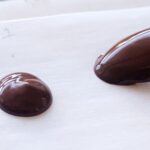
Introduction
Hot chocolate is a beloved beverage enjoyed by people of all ages around the world. Whether it’s a chilly winter evening or a cozy night by the fireplace, a steaming cup of hot chocolate can provide comfort like no other. However, achieving the perfect temperature for your hot chocolate can make a significant difference in your overall enjoyment. In this article, we will explore the art of preparing hot chocolate at the ideal temperature, ensuring every sip is a delight.
The Science Behind Hot Chocolate Temperatures
1. Understanding the Chocolate Melting Point
Hot chocolate starts with chocolate, and knowing its melting point is crucial. Chocolate melts around 86-90°F (30-32°C), which is slightly below body temperature. This is why it feels creamy and luxurious when it touches your tongue.
2. The Role of Milk Temperature
The temperature of the milk you use is equally important. Heat it to around 150-160°F (65-71°C). This ensures that the chocolate can fully melt into the milk, creating a smooth and consistent texture.
Finding Your Perfect Hot Chocolate Temperature
3. The Personal Preference Factor
The ideal temperature for hot chocolate can vary from person to person. Some prefer it piping hot, while others like it slightly cooler. It’s essential to find the temperature that suits your taste buds best.
4. Recommended Temperature Range
For a general guideline, aim for a hot chocolate temperature between 160-180°F (71-82°C). This range allows you to enjoy the flavors without scalding your mouth.
The Art of Temperature Control
5. Using a Thermometer
To achieve precise results, invest in a kitchen thermometer. This tool will help you monitor the temperature of both the chocolate and milk, ensuring you hit the sweet spot.
6. Gradual Heating
When melting chocolate and heating milk, opt for a gradual process. Slowly increase the temperature to avoid scorching the chocolate or overheating the milk.
Tips for Serving Hot Chocolate
7. Preheated Mugs
Warm your mugs before pouring in hot chocolate. This helps maintain the temperature of your drink for a more extended period.
8. Whipped Cream and Toppings
Adding whipped cream or marshmallows can act as an insulator, keeping your hot chocolate warm for longer.
Maintaining the Perfect Temperature
9. Thermos Flasks
If you need to take your hot chocolate on the go, use a thermos flask to preserve its temperature.
10. Reheating Safely
If your hot chocolate cools down, reheat it gently on the stove. Avoid using the microwave, as it can cause uneven heating.
Conclusion
In the world of hot chocolate, temperature matters. The perfect temperature enhances the flavors and ensures a delightful experience. Experiment with different temperatures to find your sweet spot and savor the magic of a well-made hot chocolate.
Frequently Asked Questions
1. Can I use a microwave to heat my hot chocolate?
It’s best to avoid the microwave when reheating hot chocolate as it can lead to uneven heating. Opt for a stovetop method for better results.
2. What’s the difference between cocoa powder and chocolate bars for hot chocolate?
Cocoa powder is easier to incorporate into hot milk, while chocolate bars create a creamier texture. The choice depends on your preference.
3. Is there a specific type of chocolate that’s best for hot chocolate?
Dark chocolate with a cocoa content of 70% or higher is commonly preferred for a rich and indulgent hot chocolate experience.
4. Can I make hot chocolate with non-dairy milk?
Absolutely! You can use almond milk, soy milk, or any non-dairy alternative. Just ensure it’s heated to the right temperature.
5. How can I make hot chocolate more festive?
To make your hot chocolate festive, consider adding a dash of cinnamon, a swirl of caramel, or a sprinkle of crushed peppermint candy for a delightful twist.










